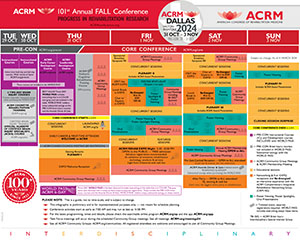Neuroplasticity
The Effects of Anodal Tdcs on Motor Sequence Practice in Non-stuttering Controls and People Who Stutter
Sunday, November 3, 2024
9:30 AM - 10:30 AM
Location: ROOM: Chantilly Foyer REGION: Tower Lobby Level >>> DIRECTIONS: From the ACRM Registration desk, proceed towards the elephants. The Chantilly Foyer is immediately behind the elephants.

Cindy Nguyen, M.Sc. (she/her/hers)
Graduate Student
Rehabilitation Sciences Institute, University of Toronto
Toronto, Ontario, Canada
Presenting Author(s)
Research Objectives: To investigate the extent to which anodal transcranial direct current stimulation (tDCS) modulates the right primary motor cortex and influences performance on a non-speech sequential motor practice task.
Design: Fifty participants were enrolled in the study and divided into stutter and control groups. Each group performed a finger tapping task, involving typing a 10-number sequence with their left hand for 20 minutes, with or without tDCS stimulation as described in the Interventions section. Following the task, there was a 15-minute period for monitoring adverse effects. Once this period elapsed, participants repeated the task with one sequence.
Setting: The study was conducted at the Speech Fluency Lab at the University of Toronto.
Participants: Twenty right-handed adults, aged 18-55 years, who stutter and thirty who do not, were enrolled and divided into Stutter and Control groups. Selection was based on eligibility criteria. Inclusion criteria were: (1) right-handedness, (2) non-smoker status, (3) normal cognitive ability, and (4) developmental stuttering. Exclusion criteria were: (1) hearing loss, (2) neurological or psychiatric disorders, (3) medication affecting brain and motor function, (4) factors compromising tDCS safety, and (5) participation in a motor sequencing study within the past year.
Interventions: The right primary motor cortex was stimulated using tDCS at 2 mA for 20 minutes in the anodal condition, while the sham condition involved no actual stimulation, using a mock tDCS setup.
Main Outcome Measures: Outcomes were measured based on sequence duration and reaction time to discern the differences between active and sham conditions. Sequence duration is defined as the time taken to complete one sequence, and reaction time as the time elapsed between the stimulus and the response."
Results: The active condition in the stutter group exhibited slower performance in reaction time and sequence duration compared to other cohorts. The sham condition in the stutter group performed similarly to the control group. No significant differences were observed between conditions in the control group.
Conclusions: The findings of this study will contribute to understanding the feasibility of using anodal tDCS to observe non-speech motor skill control in people who stutter. Further investigation is warranted to determine if these findings are consistent across larger sample sizes. Specifically, future research should aim to determine whether excitatory modulation of the right M1 in people who stutter consistently yields the motor practice effects observed.
Author(s) Disclosures: The authors declare that the research was conducted in the absence of any commercial or financial relationships that could be construed as a potential conflict of interest.
Design: Fifty participants were enrolled in the study and divided into stutter and control groups. Each group performed a finger tapping task, involving typing a 10-number sequence with their left hand for 20 minutes, with or without tDCS stimulation as described in the Interventions section. Following the task, there was a 15-minute period for monitoring adverse effects. Once this period elapsed, participants repeated the task with one sequence.
Setting: The study was conducted at the Speech Fluency Lab at the University of Toronto.
Participants: Twenty right-handed adults, aged 18-55 years, who stutter and thirty who do not, were enrolled and divided into Stutter and Control groups. Selection was based on eligibility criteria. Inclusion criteria were: (1) right-handedness, (2) non-smoker status, (3) normal cognitive ability, and (4) developmental stuttering. Exclusion criteria were: (1) hearing loss, (2) neurological or psychiatric disorders, (3) medication affecting brain and motor function, (4) factors compromising tDCS safety, and (5) participation in a motor sequencing study within the past year.
Interventions: The right primary motor cortex was stimulated using tDCS at 2 mA for 20 minutes in the anodal condition, while the sham condition involved no actual stimulation, using a mock tDCS setup.
Main Outcome Measures: Outcomes were measured based on sequence duration and reaction time to discern the differences between active and sham conditions. Sequence duration is defined as the time taken to complete one sequence, and reaction time as the time elapsed between the stimulus and the response."
Results: The active condition in the stutter group exhibited slower performance in reaction time and sequence duration compared to other cohorts. The sham condition in the stutter group performed similarly to the control group. No significant differences were observed between conditions in the control group.
Conclusions: The findings of this study will contribute to understanding the feasibility of using anodal tDCS to observe non-speech motor skill control in people who stutter. Further investigation is warranted to determine if these findings are consistent across larger sample sizes. Specifically, future research should aim to determine whether excitatory modulation of the right M1 in people who stutter consistently yields the motor practice effects observed.
Author(s) Disclosures: The authors declare that the research was conducted in the absence of any commercial or financial relationships that could be construed as a potential conflict of interest.
Learning Objectives:
- Discover how anodal transcranial direct current stimulation affects sequential motor practice in a non-speech motor task
- Define what transcranial direct current stimulation is
- Describe how anodal transcranial direct current stimulation can affect brain activity

.jpg)
.jpg)
.jpg)
